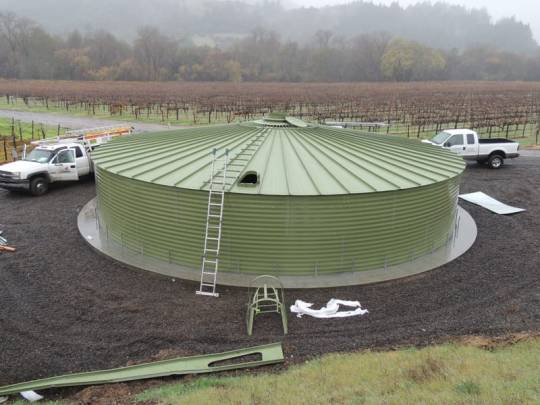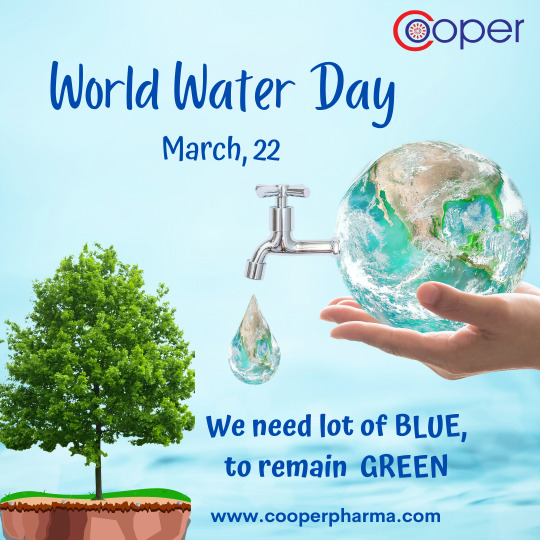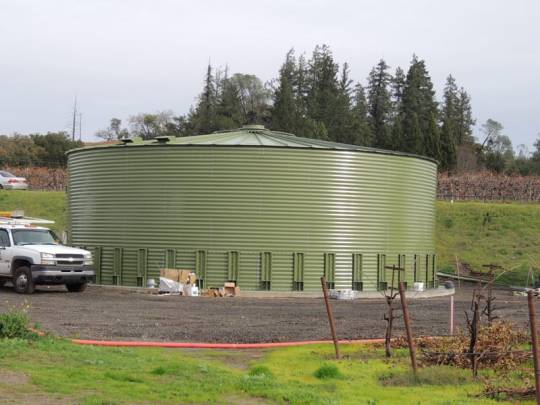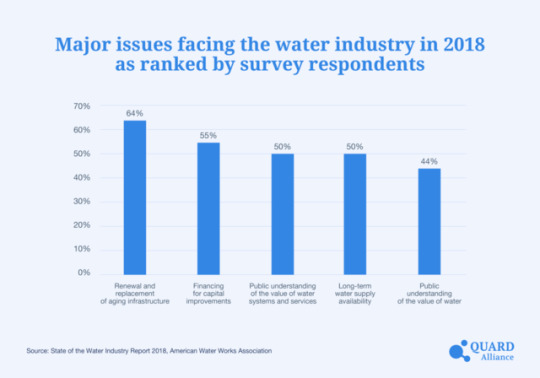#WaterInfrastructure
Text
Featured Water Storage Tanks: Solutions for Every Need
Discover our handpicked selection of featured water storage tanks, tailored to meet diverse requirements. From compact designs for residential use to industrial-grade solutions, our featured tanks prioritize quality and efficiency. Find the perfect match for your water storage needs with our curated selection.

#WaterStorage#TankManufacturers#SustainableStorage#QualityWaterTanks#StorageSolutions#WaterInfrastructure#TankInnovation#EnvironmentalResilience#LiquidStorage#WaterManagement
0 notes
Text
Explore efficient pumped drainage systems in the UK designed to manage excess water effectively. Learn about cutting-edge technology, sustainable solutions, and reliable infrastructure for flood prevention and urban water management. Discover how pumped drainage systems contribute to resilient and sustainable communities across the United Kingdom.
#PumpedDrainage#UKWaterManagement#FloodPreventionUK#UrbanInfrastructure#SustainableDrainage#ResilientCommunities#WaterInfrastructure#DrainageTechnology#EnvironmentalSolutions#UKUrbanResilience
0 notes
Text
#RCCJackingPipe#ConcretePipes#PipeManufacturer#Infrastructure#Construction#PuneManufacturers#SewerPipes#WaterInfrastructure#CivilEngineering#PipeSolutions
0 notes
Text


Contact Team Stalwart for a Healthy Living!
#SuperChlorination#WaterTreatment#WaterDisinfection#CleanWater#WaterSafety#PublicHealth#WaterDistribution#ChlorineTreatment#SafeDrinkingWater#WaterQuality#Hygiene#WaterManagement#Healthcare#Sanitization#TeamStalwart#WaterInfrastructure#WaterPurification#CleanAndSafeWater#EnvironmentalHealth#WaterSystemMaintenance
0 notes
Text
Booster Pump Market Forecast 2024 to 2032
A booster pump is a type of pump used to increase the pressure of a liquid, typically water, as it flows through a pipeline or plumbing system. It is commonly employed in situations where the existing water pressure is insufficient for the desired operation, such as in residential, commercial, and industrial settings. Booster pumps are designed to enhance the pressure of the liquid, ensuring that it reaches the required level for various applications.
The Booster Pump Market was valued at USD 2,657.89 Million in 2022 and is expected to register a CAGR of 3.44% by 2032.
Rapid urbanization and the construction of new buildings, residential areas, and commercial complexes often require efficient water distribution systems. Booster pumps play a vital role in ensuring adequate water pressure and supply to high-rise buildings and distant areas.
Get a Free Sample Copy
#BoosterPumps#WaterPressureBoosters#PumpTechnology#WaterDistribution#FluidTransportation#PressureBoosting#PumpSolutions#WaterInfrastructure
0 notes
Text
The Value of Water: Celebrating World Water Day 2023
Introduction: Water is a fundamental resource that is essential for human life and the environment. It is a precious resource that needs to be managed sustainably to ensure its availability for current and future generations. World Water Day is celebrated annually on March 22nd to raise awareness about the importance of water and the need to manage it sustainably. This year, the theme for World Water Day is "Valuing Water."
The Value of Water: Water is essential for human survival, and it also plays a vital role in the economy, the environment, and society. Water is used in agriculture, industry, energy production, and transportation. It is also crucial for sanitation and hygiene, which are essential for public health. In addition, water plays a crucial role in maintaining ecosystems, supporting biodiversity, and regulating the climate.
Despite the vital role that water plays, many people around the world still lack access to safe and clean water. According to the United Nations, approximately 2.2 billion people lack access to safe drinking water, and 4.2 billion people lack access to safely managed sanitation services. Lack of access to clean water and sanitation disproportionately affects women and children, who often spend hours each day collecting water from distant sources.
Valuing Water: Valuing water means recognizing the vital role that water plays in our lives and the need to manage it sustainably. It means understanding the economic, social, and environmental value of water and taking steps to ensure its availability for current and future generations.
Valuing water also means recognizing the need to invest in water infrastructure, including water supply and sanitation systems, irrigation systems, and water treatment facilities. It means promoting water conservation and efficient water use, reducing water pollution, and protecting water resources from degradation.
Sustainable Water Management: Sustainable water management is critical to ensuring the availability of water for current and future generations. It involves managing water resources in a way that balances the competing demands of various users while protecting the environment. Sustainable water management includes:
Water conservation and efficient use: This involves reducing water waste and promoting efficient water use in agriculture, industry, and households.
Water infrastructure: This includes developing and maintaining water supply and sanitation systems, irrigation systems, and water treatment facilities.
Water governance: This involves creating policies and regulations that promote sustainable water management and ensure that water resources are managed in a fair and equitable manner.
Water education and awareness: This involves raising awareness about the importance of water and promoting water conservation and sustainable water management practices.
Conclusion: Water is a precious resource that is essential for human life and the environment. Valuing water means recognizing the vital role that water plays and taking steps to manage it sustainably. Sustainable water management is critical to ensuring the availability of water for current and future generations. On this World Water Day, let us all commit to valuing water and taking actions to ensure its availability for all.
Read more life turning blogs at: bit.ly/3xhwxI6

#WorldWaterDay#SustainableWaterManagement#WaterConservation#WaterInfrastructure#CleanWaterAccess#WaterPollution#WaterGovernance#WaterEducation#health#people#nutrition#cooperpharma#healthcare#bodybuilding#education#nevergiveup#workout#healthylifestyle#yadavkoolboy#yadavhewrote
1 note
·
View note
Text
The Importance of Water as a Public Good: The Case of New York City
Water is a fundamental resource for life on our planet. Beyond being essential for human survival, it plays a vital role in many aspects of society, from agriculture to industry and energy generation. In many parts of the world, water management is a critical issue, and the decision of how to manage this resource can have significant consequences for public health, the environment, and social equity. One of the most notable examples of how water is treated as a public good is the case of New York City, one of the largest and most influential cities in the world.
In New York City, water is considered a public good, and the water supply system is managed by the New York City Department of Environmental Protection (DEP). This system is one of the largest and most complex in the world, providing drinking water to over 9 million people across the city and its surrounding areas. But why is water treated as a public good in New York City, and what are the implications of this approach?
Water as a Basic Necessity
First and foremost, water is seen as a basic necessity in New York City, as it is in any other part of the world. Without access to clean and safe water, people cannot survive. Therefore, ensuring the supply of potable water is a fundamental priority for the city’s authorities. Moreover, water is essential for public health, and a public water system can be more easily regulated to ensure that quality standards are maintained and that water is properly treated to prevent diseases.
Equity and Accessibility
Another reason why water is treated as a public good in New York City is the issue of equity and accessibility. In a city as diverse as New York, it is crucial that all residents, regardless of their background or socioeconomic status, have equal access to clean drinking water. Maintaining the water supply as a public service ensures that it is accessible to everyone, regardless of their ability to pay for it.
Democratic Control
Furthermore, keeping the water supply as a public service allows the community to exercise democratic control over the policies and decisions related to water management. This means that citizens have a voice in how the resource is managed and distributed, ensuring that their needs and concerns are taken into account.
Challenges and Considerations
However, managing water as a public good also presents challenges. Public water systems require significant investments in infrastructure and maintenance, and ensuring the safety and quality of the water can be a complex and costly task. Additionally, the management of water as a public good may be subject to political and bureaucratic pressures, which can affect its effectiveness and transparency.
Despite these challenges, the case of New York City demonstrates the benefits of treating water as a public good. By ensuring equitable access to clean drinking water and allowing for democratic control over its management, New York City is protecting the health and well-being of its residents and building a more just and sustainable society. In a world where water scarcity and environmental degradation are growing challenges, New York City’s approach serves as an inspiring example of how we can ensure access to water for all, now and in the future.
texto feito por um ser humano com inteligência artificial
#WaterAsPublicGood hashtag#NewYorkCity hashtag#WaterManagement hashtag#PublicHealth hashtag#SocialEquity hashtag#DemocraticControl hashtag#WaterInfrastructure hashtag#SustainableSociety hashtag#WaterScarcity hashtag#EnvironmentalProtection
0 notes
Link
Water Asset Strategy Lead-Saudi Arabia, Apply Now!
0 notes
Text
Replacing Lead Water Pipes: A Vital Investment for Health, Infrastructure, and Equity
Replacing lead pipes: vital for health, infrastructure, equity. Funding challenge hinders progress. Federal support is essential. #LeadPipes #WaterInfrastructure #FundingChallenge #SocialEquity
The Biden administration has set an ambitious goal: the removal of nearly all lead water pipes in the United States within the next decade. This proposal, aimed at addressing the pressing issue of lead in drinking water, comes with an estimated cost of $20 billion to $30 billion over ten years, as stated by the Environmental Protection Agency (EPA). While the benefits of this initiative are…

View On WordPress
0 notes
Link
0 notes
Photo

My Tiny planet obsession ... Ganjiya Barrage #barrage #weather #tinyplanet #photography #photomanipulation #editing #river #earth #green #humanmade #infrastructure #waterinfrastructure (at Jamshedpur) https://www.instagram.com/p/CQ_myPOFBs2/?utm_medium=tumblr
#barrage#weather#tinyplanet#photography#photomanipulation#editing#river#earth#green#humanmade#infrastructure#waterinfrastructure
0 notes
Text
Safeguarding Hydration: The Vital Role of Potable Water Storage Tanks
Explore the significance of potable water storage tanks in ensuring a clean and reliable water supply. From promoting public health to emergency preparedness, discover how these tanks play a pivotal role in storing and delivering safe drinking water for communities and industries alike.

#WaterStorage#TankManufacturers#SustainableStorage#QualityWaterTanks#StorageSolutions#WaterInfrastructure#TankInnovation#EnvironmentalResilience#LiquidStorage#WaterManagement
0 notes
Text
🌊 Upgrade your sewage system with Grinder Pumps from Pump Supplies UK! 🔄 Pumping power and efficiency at your fingertips. 💪 Say goodbye to clogs and hello to seamless wastewater management!
🚽 Explore our range today for a cleaner, smoother experience!

#PumpSuppliesUK#GrinderPumpSystem#SewageUpgrade#EfficientPumping#WastewaterManagement#GrinderPumpTechnology#NoMoreClogs#SewageSolutions#ReliablePumping#WaterInfrastructure#PumpItRight
0 notes
Text
Registration Now Open: Great Lakes Water Infrastructure Conference

Registration is now open for the 2020 Great Lakes Water Infrastructure Conference, a first-of-its-kind regional conference hosted by the Michigan Department of Environment, Great Lakes, and Energy (EGLE)! The conference will focus on the water infrastructure challenges faced by the Great Lakes region and solutions to those challenges. We are anticipating approximately 800-1,000 attendees, including municipal officials, water professionals, academia, nonprofits, as well as state and local officials from around the country.
Who should attend?
Municipal and Regional Government Officials
Water Utility Managers/Directors
Emergency Response Personnel
Collection and Distribution Systems Decision Makers
Computer/Process Control Systems Professionals
Operations and Maintenance Personnel
Scientists
Product and Service Providers
Technical Practice Leaders
Project Managers and Engineers
Treatment Plant Operations Consultants
Pipeline Rehabilitation Consultants
Water Advocacy Organizations
Security, Emergency and Cybersecurity Specialists, and Advisors
Environmental and Community Groups
Anyone interested in water infrastructure in the Great Lakes region
Conference Highlights
Tracy Mehan, Executive Director, Government Affairs at American Water Works Association (AWWA)
Manny Teodoro, PhD, Associate Professor, Texas A&M University
Ridgway White, President and CEO, Charles Stewart Mott Foundation
Melissa Osborne, Senior Manager of Asset Planning for the City of Windsor, Ontario
Kyle Dreyfuss-Wells, CEO of the NE Ohio Regional Sewer District
This conference will provide the following continuing education credits:
For Professional Engineers, up to 12 CEHs/PDHs
For ASFPM Certified Floodplain Managers, up to 12 CECs
For Municipal Wastewater Operators, up to .6 CECs in the Technical category and up to .6 CECs in the Managerial category
For Drinking Water Operators, up to 1.2 CECs in the Technical category
All for $175 (through April 6)!
By registering today, you will join hundreds of professionals in the national conversation about the urgent need for reinvestment in critical water infrastructure and share the floor with other key stakeholders who are committed to be part of the solution.
#GreatLakesMichigan#waterinfrastructure#EGLE#Waterutility#Emergencyresponse#Scientists#OperationsandMaintenance#Projectmanagers#Engineers#Wateradvocacy#Environmentalgroups#Pipelineconsultants#Continuingeducationcredits#ASFPM#CEHs#PDHs#Drinkingwateroperators
0 notes
Photo

Every year, the American Water Works Association investigates the status of the water industry. According to respondents, updating and replacing aging water and wastewater infrastructure remains the most critical challenge for the water industry for four consecutive years. To understand the potential impacts of several large-scale phenomena on the water industry, all survey participants were asked to rank a list of macro-issues. The results show that water industry professionals believe that political instability, climate change/extreme weather events, terrorism and war, and pollution have the most negative impact.
0 notes